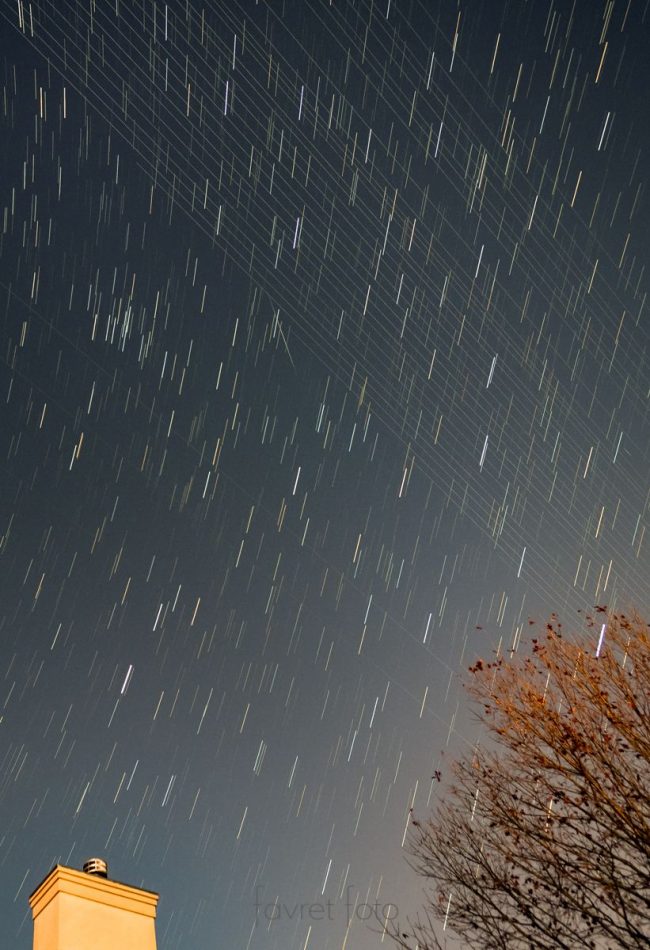General Discussion
Related: Editorials & Other Articles, Issue Forums, Alliance Forums, Region ForumsSatellites versus stars: Which will dominate the sky? (earthsky.org)
Posted by Kelly Kizer Whitt
September 28, 2021

View at EarthSky Community Photos. | In this photo’s battle of satellites versus stars, the satellites appear to be winning. The more vertical lines are star trails. The parallel straight lines in the upper right are Starlink satellites. There are also 2 meteors in this photo. Charlie Favret in Round Rock, Texas, captured this photo on December 13, 2019. He wrote: “I was curious to know if one could see the Starlink satellites on a bright night a couple of days after a full moon and inside the city limits. The answer is most definitely yes … While it was a stunning sight, is it also a sign of the night sky horror to come?” Thank you, Charlie.
Satellites versus stars
Imagine yourself standing in a rural spot in the dark of night, staring up at the sky. Astronomers estimate that, from a dark site, we see about 2,000 stars with the eye alone. And if we’re lucky, we might also see a satellite, or even two, crossing the sky. But, in the future, a significant of the 2,000 visible “stars” might not be stars at all. A new simulation, released in September 2021, suggests many might be human-made satellites: cutting paths across the stars and constellations, distracting you from the quiet stillness of the night sky. The simulation shows that, soon, every 16th “star” we see in the night sky might be a satellite.
In superhero movies, the battle between good and evil is clear. There are the heroes and villains. In the battle between satellites versus stars, there are no clear-cut villains. Satellites help us. They let us connect easily, every day, to people all across the globe. But various companies now have plans to send thousands of satellites skyward. They’re connecting the satellites into what are called constellations, which are groups of satellites working together as a single system. The best known planned mega-constellation of satellites is SpaceX’s Starlink. There’s also OneWeb, Amazon’s Kuiper and China’s StarNet/GW. Together they’re currently planning to launch a total of 65,000 satellites.
Lovers of the night fear these satellites will pollute near-Earth space to the point that we’ll notice the satellites more than the stars.
Samantha Lawler of the University of Regina in Canada led the team of scientists that created a new simulation of the potential positions and brightnesses of these satellites. They submitted the study to the American Astronomical Society journals for review. A preprint, dated September 14, 2021, is available online.
***
more: https://earthsky.org/space/satellites-versus-stars-night-sky-kessler-syndrome/?utm_source=EarthSky+News
https://arxiv.org/abs/2109.04328
I've posted several articles about this in the Science Forum. I thought this recent article was deserving of a wider audience, so I'm posting in GD.
Silent3
(15,458 posts)Aesthetically I don't really know one way or another how troubling this will be for appreciation of the night sky. Light pollution from on-the-ground light sources is the biggest problem now, with many people seldom seeing anything more than a handful of the brightest stars and planets.
2naSalit
(87,012 posts)Disaffected
(4,575 posts)realistically depicts the night sky, at least now. What we are seeing their is AKAIK, a swarm of Starlink satellites shortly after release from the carrier rocket. They will eventually (over several months) spread out and won't be nearly as obvious.
At least now anyway - when 10s of thousands are in orbit, it will be a lot different.
Response to eppur_se_muova (Original post)
Chin music This message was self-deleted by its author.
Disaffected
(4,575 posts)And there is a lot more to come, not only from SpaceMusk but from other companies with similar ambitions.
Response to Disaffected (Reply #5)
Chin music This message was self-deleted by its author.
jcgoldie
(11,667 posts)At least we can take solace in the fact that we will likely make the planet uninhabitable for humans before the last stars in the night sky are entirely obscured by manmade junk. Certainly if Coal Manchin has any say in it...